Lima in 2 days – 15 things to see and do, ranging from tourist attractions, cool places to hang around, and great food to try.

A few weeks ago we came back from a 12-day trip to Peru. Even though Peru has always been at the top of our travel list, it seemed like such a ‘big’ destination, so unknown and new, that it begged for a proper research. I neither had the time to think, let alone plan for it, but Peru called to us loud and clear, and only a few weeks after the thought first crossed our minds, we found ourselves setting foot on the South American continent for the first time.
Peru captured out hearts with its multifaceted culture and history, spectacular nature, and vibrant cuisine. It was one of the more adventurous trips we’ve done, packed with so much action, that from one day to the next it felt like a whole week has passed – so much to see, and so much to learn. From the dramatic landscape of the Andes, the mystical beauty of Machu Picchu, and ancient Inca ruins, the fascinating stillness of the Amazon rain forest, and the hustle and bustle of the human jungle that Lima is – our senses were bombarded with exotic tastes, colors and sounds that will stay with us for a long time.
There is so much to show and tell, but first let’s do a quick tour of Lima – this is where we started and ended our trip.
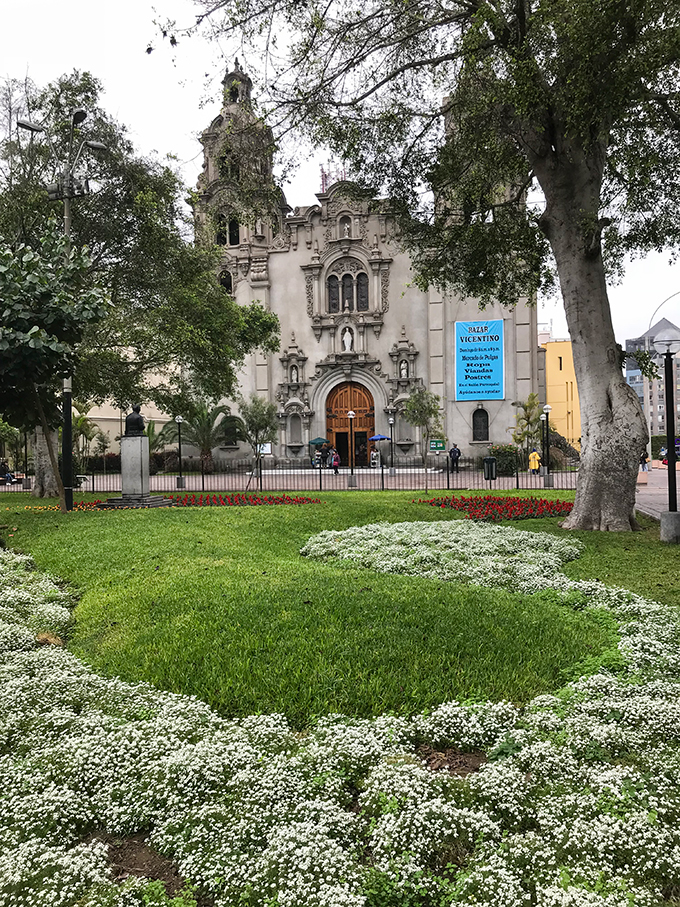
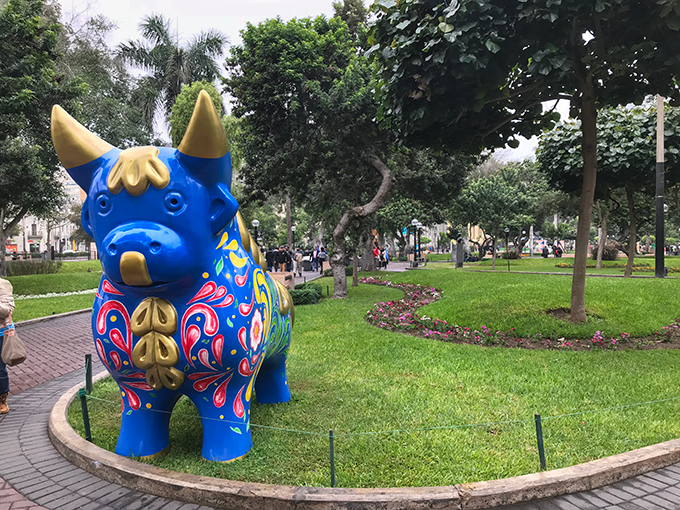
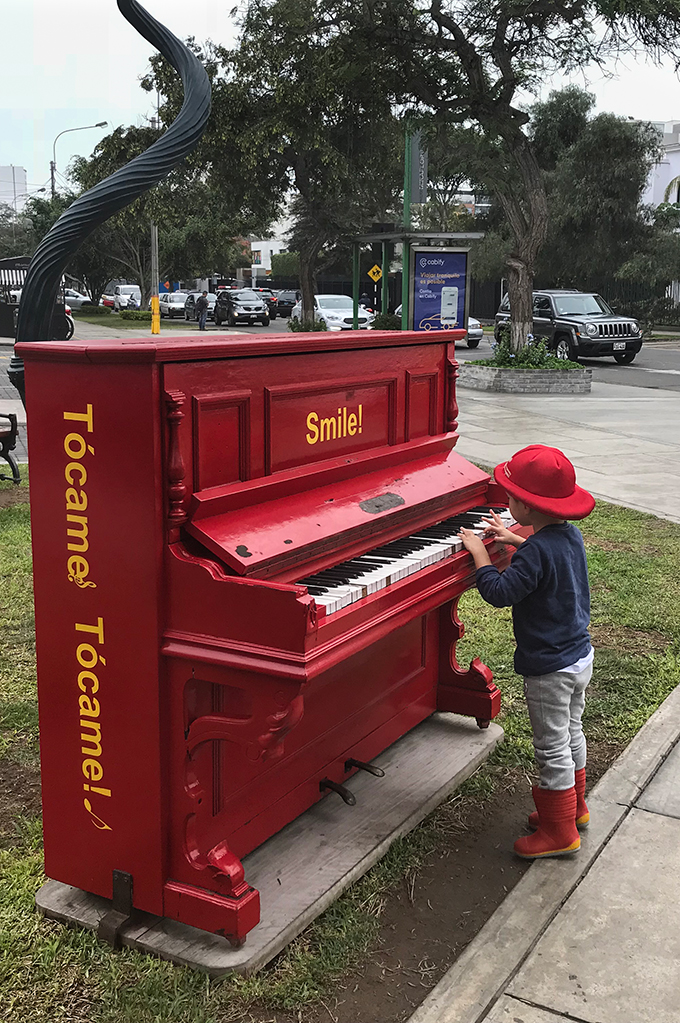
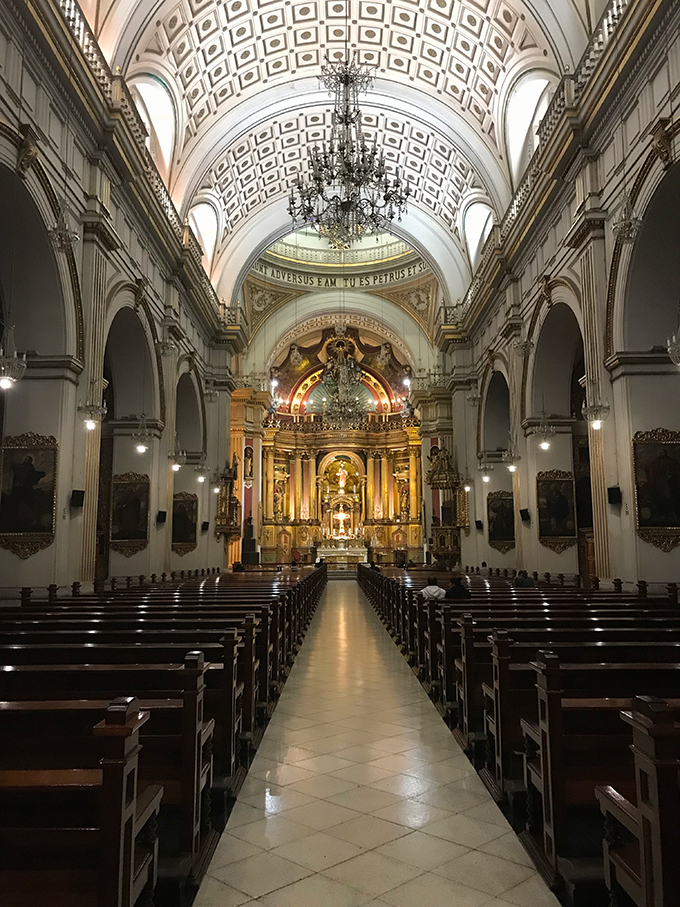
Lima
The first thing we noticed as our airplane was descending over the capital, was the layer of dense clouds, that seemed impenetrable. It was a little after 4 pm, but it was already getting dark. It was misty, foggy and muggy – nothing like the sunny picture I had in my head. Not that it was a problem, it was just a surprise. Somehow, the fact that in the southern hemisphere it’s winter in June (duh!), had not registered until this moment! 🙂 We learned later that the sun will likely not come out until summer. Oh well, so much for sunny pictures!

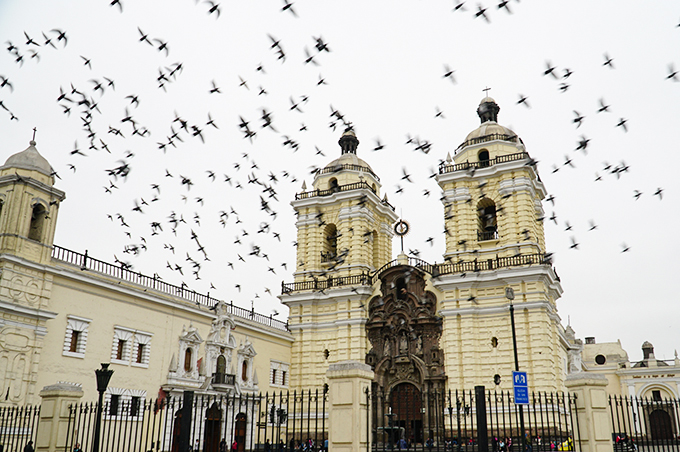
We jumped on a bus shuttle to our hotel, and immediately plunged into a horrendous rush hour traffic. Lima is huge – it stretches 80km along the Pacific coast, and 40km inland, reaching the Andes. Almost a third of Peru’s population lives in the larger metropolitan area. Couple that fact with no underground transportation system, and you’ve got a perpetual traffic problem. The good news is that once you get to a neighborhood of interest (and there are 3-4 you need to know about), you can easily explore it by foot. In general, it should take about 20 minutes by taxi to get from one neighborhood to another. Taxes are prevalent, and Uber works too.
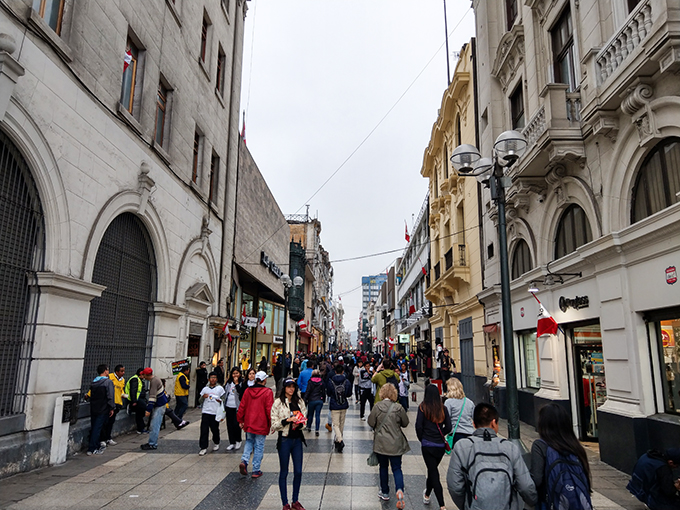
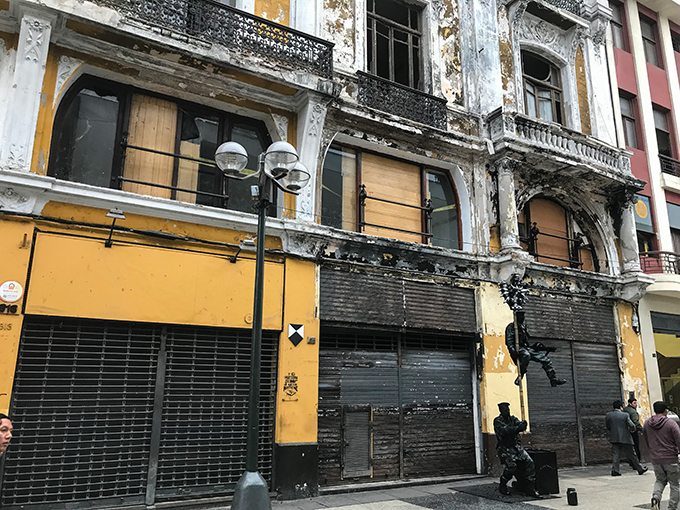
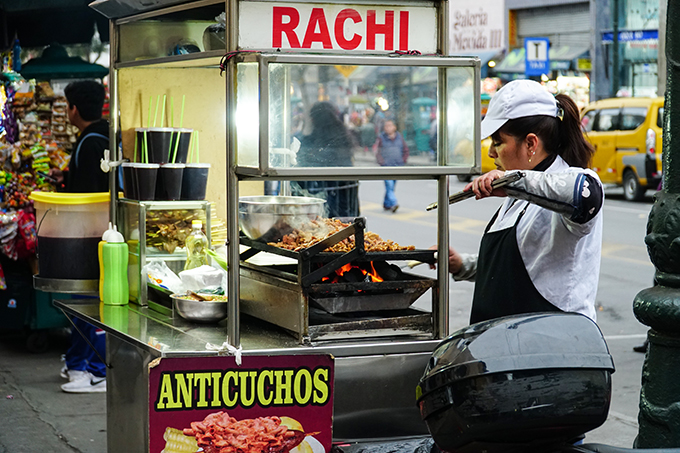
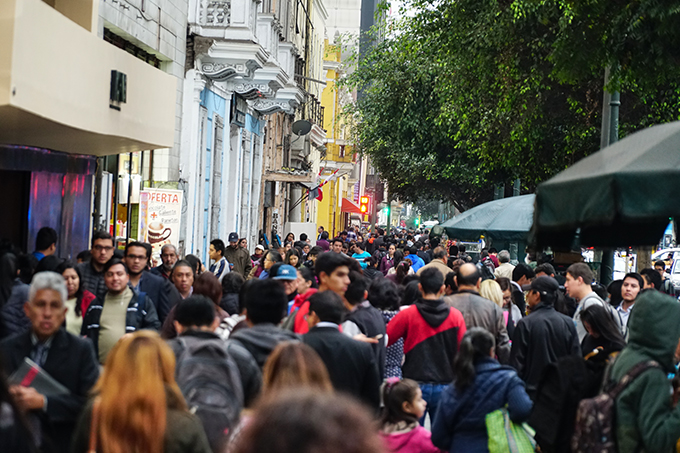
Being a giant metropolitan city, the second largest in South America, Lima has more to see and do than you could possibly pack into a couple of days.
Chances are, your hotel will be in Miraflores, one of the more upscale neighborhoods, with the biggest concentration of hotels, and restaurants. From there, you can explore the adjacent San Isidro, and Barranco districts, or skip those and spend all your time in the historical El Centro neighborhood. This was our favorite part of the city. You can easily spend one full day strolling the lively pedestrian streets between Plaza Mayor, and Plaza San Martin, littered with street food vendors and souvenir merchants, see some fine examples of baroque architecture, step inside the grandiose catholic churches, visit museums, and just soak up the old colonial charm of the city.
A big part of Lima’s allure is also its fame as the foodie capital of South America, featuring 3 of the world’s top 50 restaurants. So food was obviously at the top of our list of things to experience in Lima.
Here are my recommendations for the top 15 things to see and do in Lima, if you only have 2 days.
1) Parque del Amor
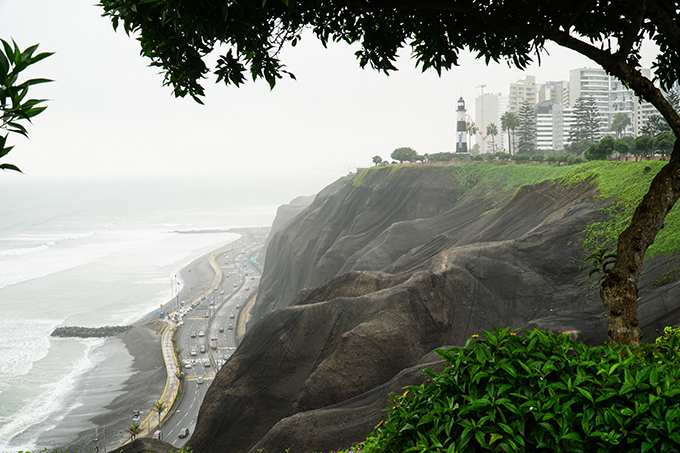
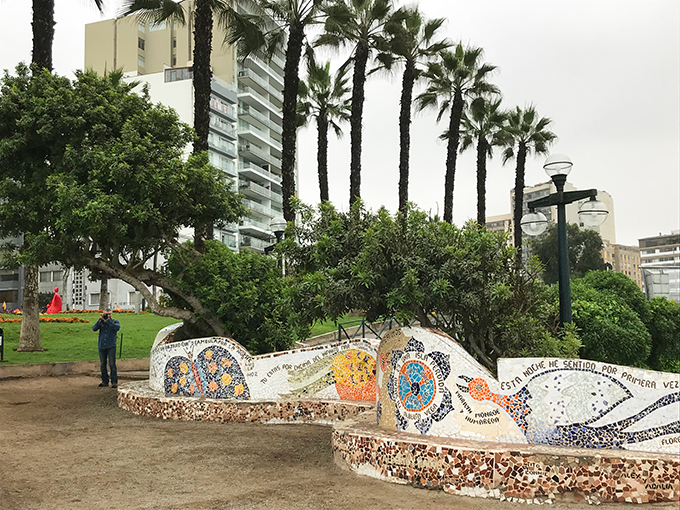

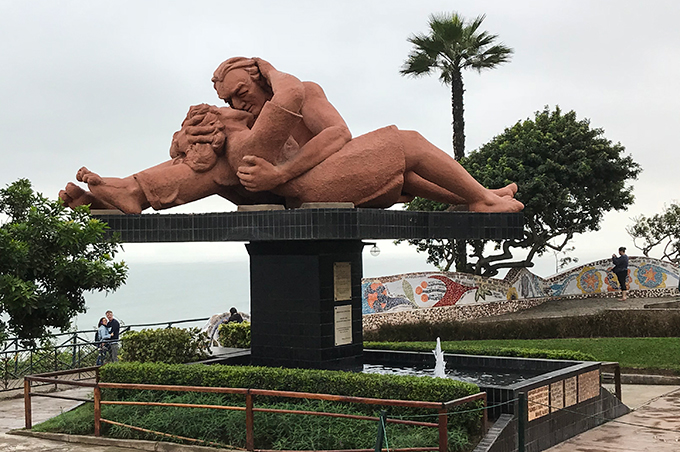
Parque del Amor (Lover’s Park) is located in Miraflores, at the edge of the cliff overlooking the ocean, and is a good place to visit in the beginning of your day, especially if you’re staying in Miraflores. Lima sits high above the ocean shore, and the views from the park are pretty spectacular. You can see the city stretching indefinitely from side to side, overhanging steep black ravines, covered in lush green carpet, and watch the surfers in the distance below.
The park was inspired by Gaudi’s Park Güell in Barcelona, and it really resembles its Spanish counterpart a bit, in the curvy shapes of the walled benches, decorated with pieces of colorful tile. In the center of the park sits a massive statue of two lovers, embraced in a passionate kiss.
2) Eat cebiche at La Mar
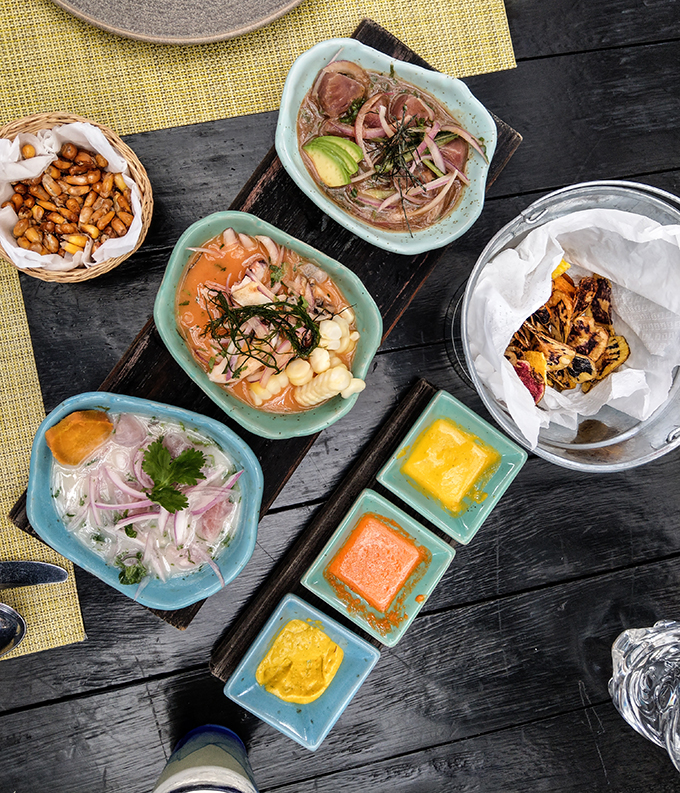
3 cebiches at La Mar cebicheria – Miraflores, Lima
When in Peru, you must try cebiche at least once! Cebiche is the crown jewel of Peruvian cuisine, often touted as Peru’s national dish, and Lima, in particular, is the best place to find the freshest seafood, and the most creative cebiches. We had quite the feast at La Mar, the famous cebicheria chain of the legendary Gaston Acurio. Depsite its casual atmosphere, the place served one of the most sophisticated-looking and delicious sea food dishes we’ve tried in Peru. We ordered a sampler of 3 cebiches – Nikkei (tuna marinated in tamarind soy sauce), Classico (catch of the day in leche de tigre), and Mixto (mixed seafood in leche de tigre, with giant corn kernels). We also tried a tuna belly tiradito – a type of cebiche that swaps the leche de tigre with spicy pepper sauce, and skips the raw onions.
You will see the term leche de tigre (tiger’s milk) in most descriptions of cebiches – this is simply the citrus marinade of lime juice, raw onion, salt and pepper, mixed in with the seafood juices. In some places, they even serve this on its own, as a drink! Peruvian cebiches often come with corn kernels, and something quite unusual – glazed sweet potatoes, served on the side! This was the only food combination that didn’t quite make sense to me. I would gladly eat the cebiche, and the sweet potato separately but they just didn’t belong together in my opinion…
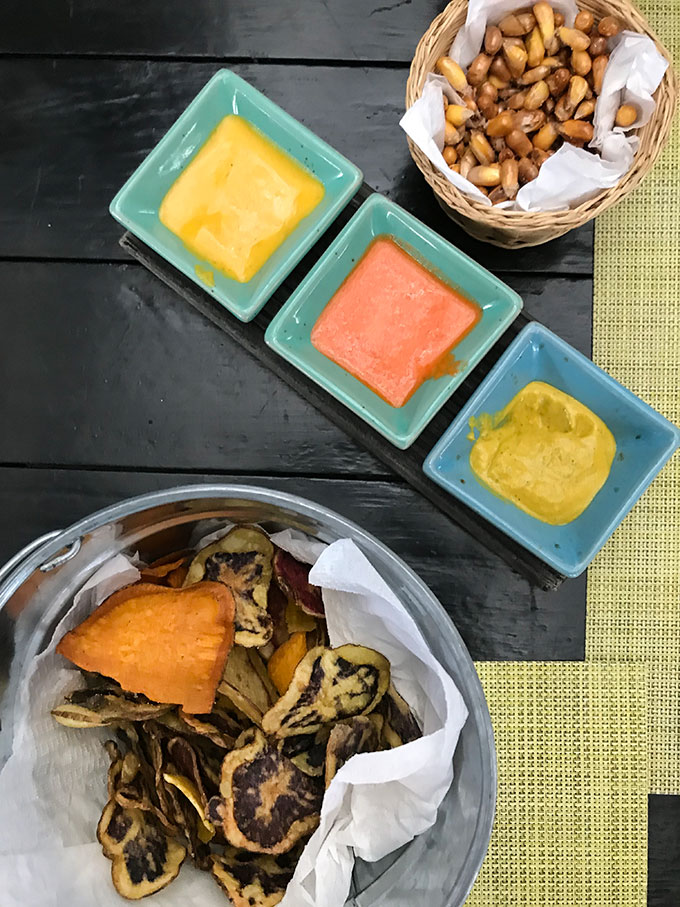
Cancha and chips at La Mar cebicheria – Miraflores, Lima
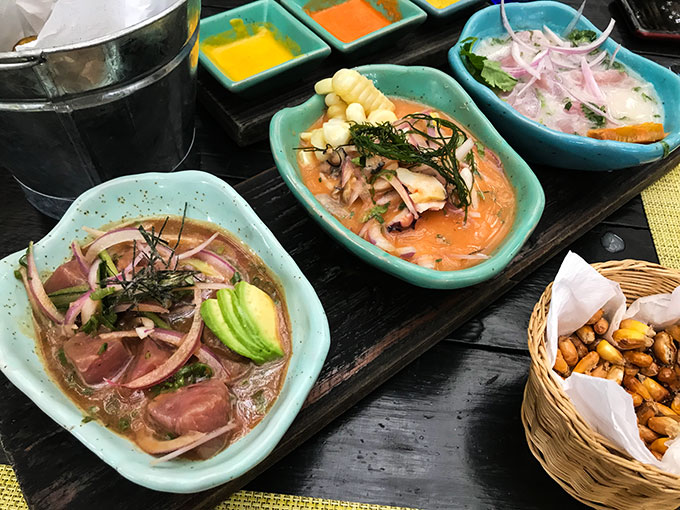

Tuna belly tiradito at La Mar – Miraflores, Lima
If you’re not a fan of raw fish, the restauraunt offers a great selection of other seafood, which unfortunately we couldn’t stuff in our bellies.
All meals come with a generous portion of cancha (an addictive snack of giant fried corn kernels, served on the house in every Peruvian restaurant), and various potato chips to scoop the cebiche with. However, the best way to eat cebiche is to slurp it with a spoon!
Despite the popularity of the restaurant, you don’t need to make reservations up front – we showed up at 12 pm on a Friday, and had no problem getting seated.
3) Huaca Pucclana
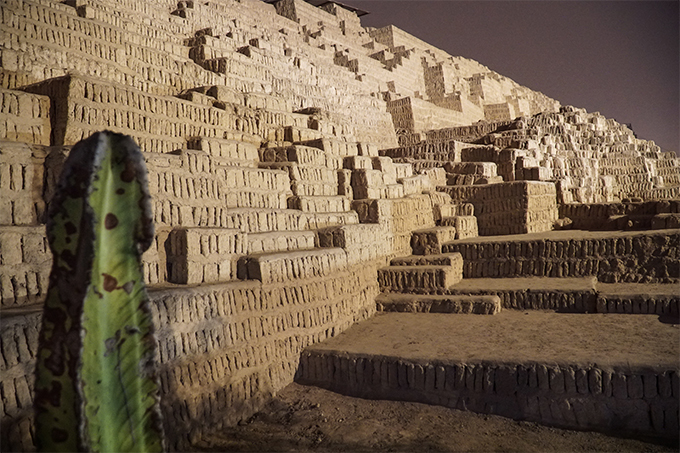
Nothing prepares you for the sight of Huaca Pucllana – an ancient, white-brick pyramid, situated right in the heart of Miraflores, amid a busy residential area. The structure dates back to 500 AD, and once served as a temple. It looks quite impressive at night, when illuminated by a soft light. You can visit the tiny museum, and take a guided tour, and you can also dine at the adjacent upscale restaurant that serves some of the most exquisite food we’ve had.

Lomo Saldato
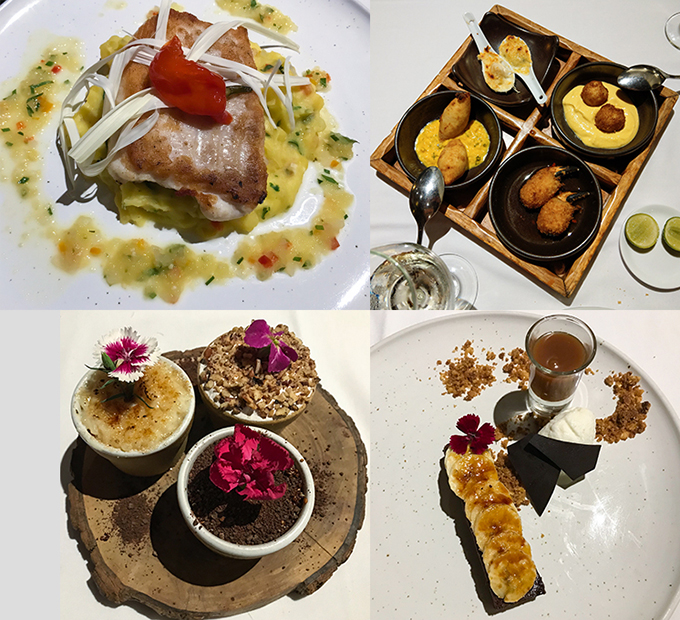
Try to book the restaurant in advance, and get a table on the patio with views of the ruins – it makes for a unique experience. Order the Lomo Saltado – a traditional dish of stir-fried beef with tomatoes, peppers and onions, served with thick potato fries and rice – it was the best we’ve tried in Peru. Definitely save space for the desserts (order a few if you can) – the pots de crème were pieces of art on a plate, and totally delicious!
4) Plaza San Martin
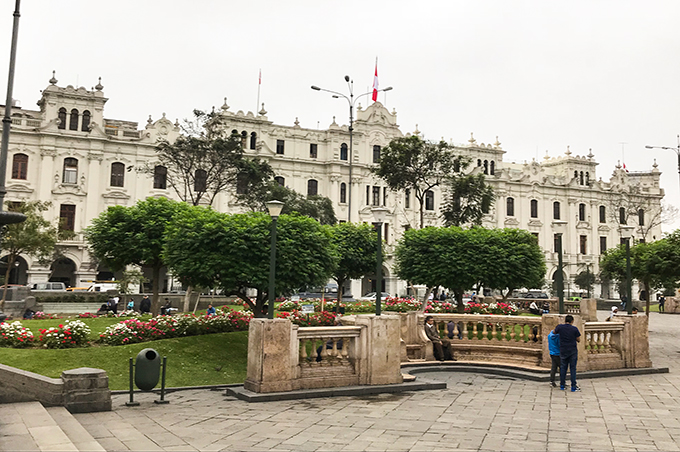

Plaza San Martin, in the historic center of Lima, is a great starting point for exploring El Centro. Built in the beginning of last century to commemorate the 100th anniversary of Peru’s independence, it’s a lively place, surrounded by beautiful buildings on all sides where you can watch street performances, festivities, demonstrations, public debates, or just feed the pigeons, stroll around, and maybe grab a bite or pisco sour in the surrounding restaurants.
In the center of the plaza is the bronze statue of Jose de San Martin, the liberator of Peru, and at its base, holding the horseman is a statue of Madre Patria, or the lady of liberty. Fun fact: look closely at the lady, and you will see a cute little llama perched on top of her head! This was a mistake made by the artist commissioned to make the statue, who took the instructions quite literally. His task was to crown the lady’s head with flames, but the problem was that the word ‘flame’ (llama in Spanish) has a double meaning. It’s not so bad, if you ask me, as llamas are synonymous with Peru, although usually you see the ladies carrying them in their hands, or on a leash, rather that on their heads! 🙂
5) Lima Cafe
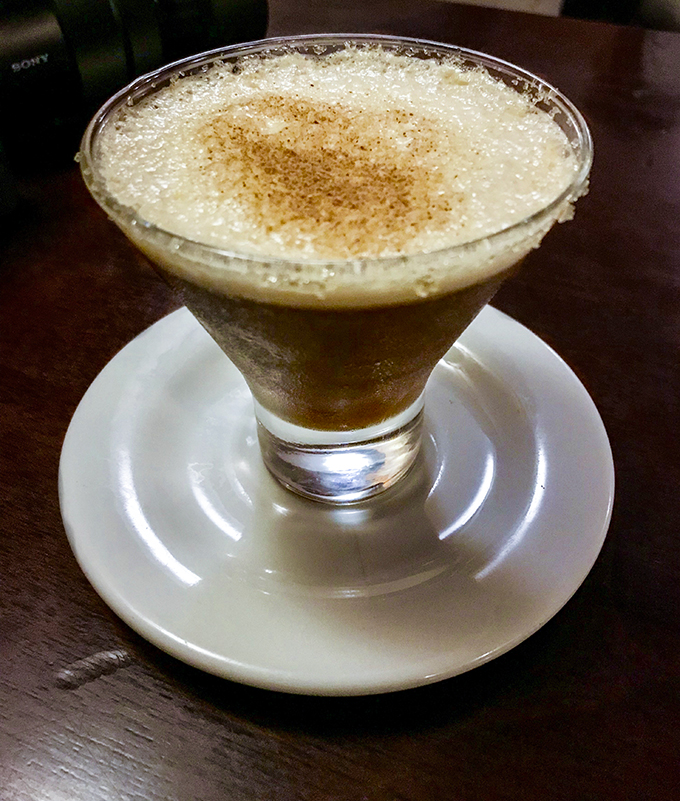
A couple of blocks from Plaza San Martin, along Jiron Carabaya street, you will find Lima Cafe – an unpretentious looking small coffee place. Its popularity though is undeniable, and for a good reason. They have an impressive array of artisan coffee drinks, and some small bites as well. We had a great Cafe Sour – a twist on Pisco Sour made with coffee, lemon juice, pisco and a hint of cinnamon – yes, that combination was actually really good. It was a nice spot to get some much needed rest, and a dose of good caffeine.
6) Iglesia de la Merced
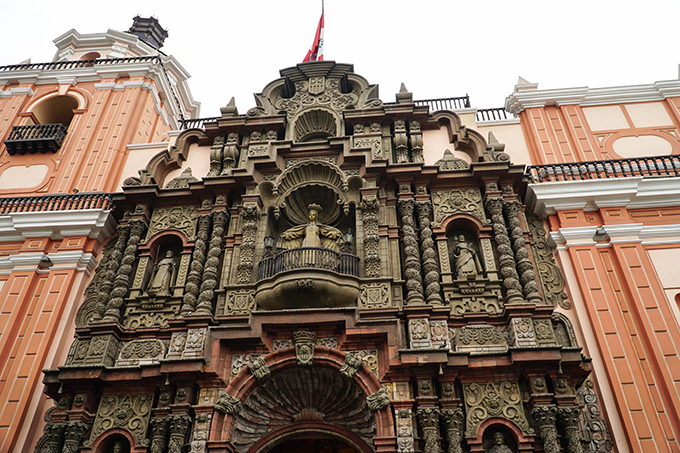
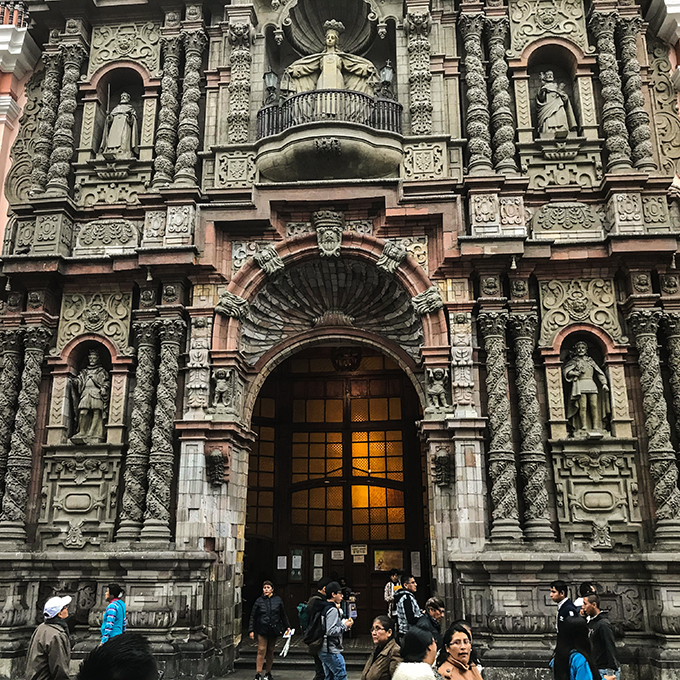
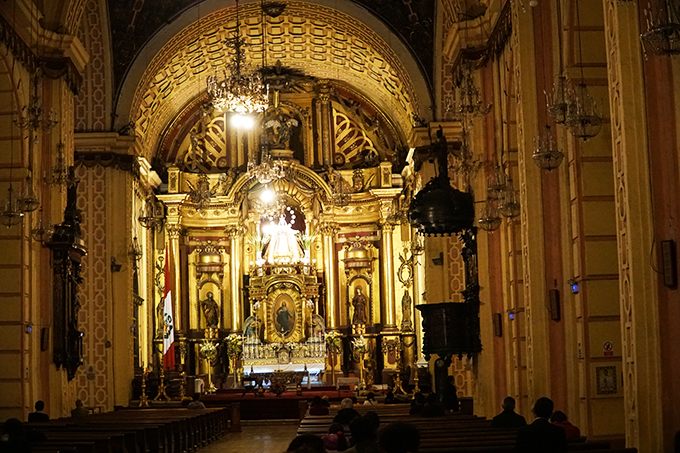
If you’ve stopped at the Lima Cafe, the church of Merced is just around the corner, and it’s worth a short visit. It has one of the most impressive examples of baroque architecture – from the intricately carved stone facade, to the lavishly adorned gilded altars of the interior. You can sneak a peak inside for free and marvel at the exuberance and grandeur of the Baroque era.
7) Plaza Mayor
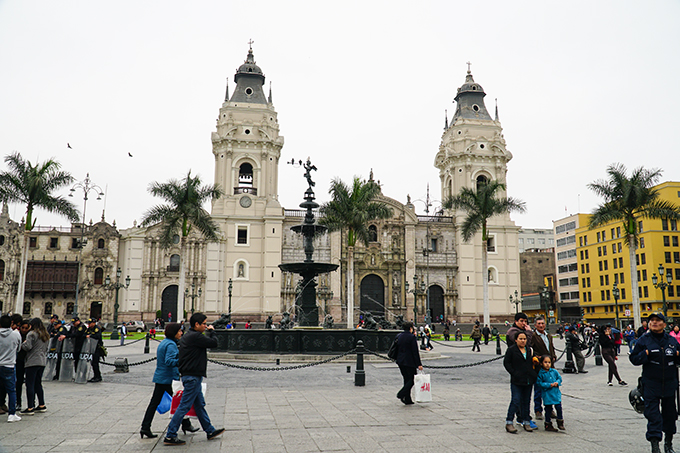
Plaza Mayor, a.k.a. Plaza de Armas lies a few blocks from Plaza San Martin. It is the oldest plaza and the birthplace of the city. It was built in 1535, and it served as the city center ever since. It’s where you will find the most famous landmarks of the city – the Presidential palace, the Cathedral of Lima, the Municipal palace, and the Archbishop’s palace. The plaza was once used as a bullfighting arena, a market, a theater, and an execution place. It was also where the independence of Peru was declared in 1821.

The north side of Plaza Mayor is dominated by the grand Palacio de Gobierno (the Presidential palace). It’s also known as Casa de Pizarro, since the Spanish conquistador who founded the city, Francisco Pizarro built his residence in this place. Over the years, the building underwent numerous transformations due to destruction by fire and earthquakes, and today it is the official residence of the Peruvian president and government. Each day at noon, there is a ceremony of changing of the guards. If you happen to be there at that time, it’s probably fun to watch. We missed it both times.

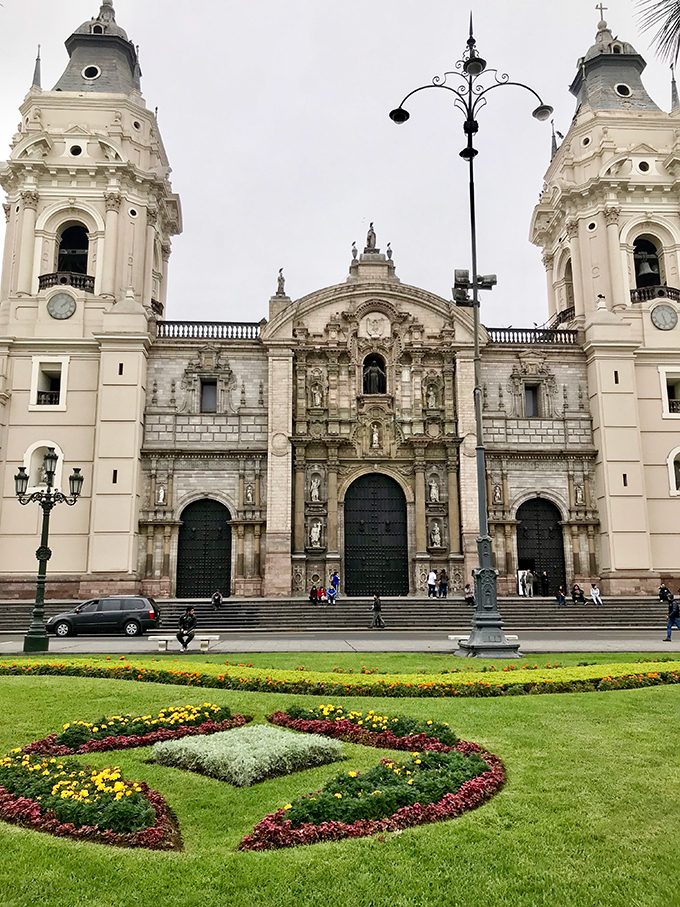
Cathedral Basilica of Lima – Plaza de Armas, Lima
On the east side lie the equally impressive Cathedral of Lima and the Archbishop’s Palace. The construction of the Cathedral began at the same time as the founding of the city in 1535, and its layout was dictated by Francisco Pizarro.
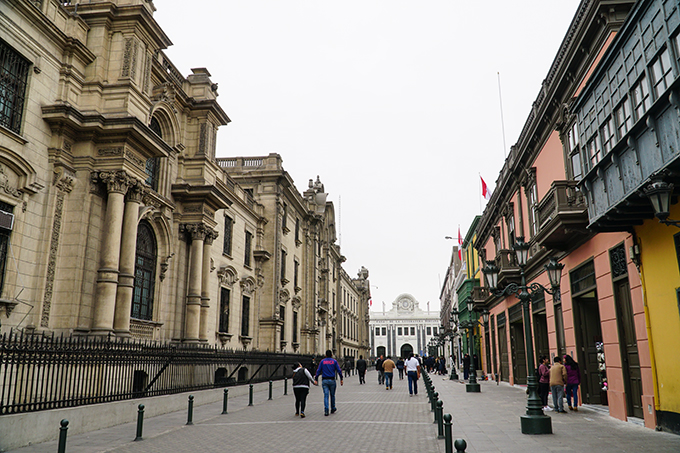
Palacio de Gobierno on the left, and the Chocolate museum on the right
If you stroll past the Cathedral and the Archbishop’s palace, towards the Presidential palace, at the street corner you will find the newly opened Chocolate museum and the Pisco museum next to each other – two things Peru is famous for!
8) Basilica y Convento de San Francisco
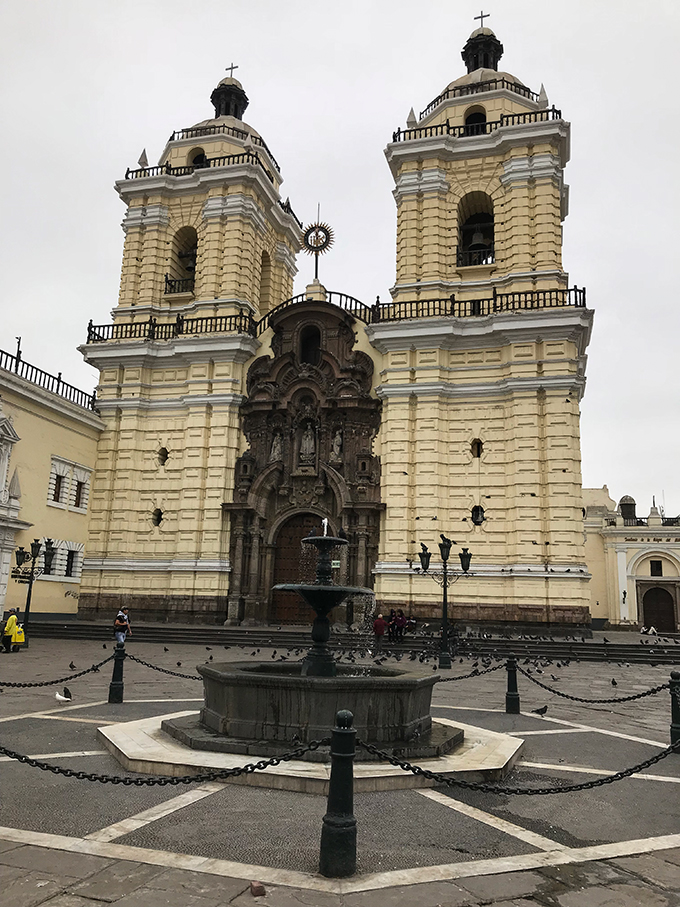
Take a break from the busy streets of Lima, and go underground to see the catacombs of the Convent of San Francisco. Both the church and the convent were awarded UNESCO heritage status, and the guided 30-minute tour is a short and sweet glimpse of the religious world of the 17 century Lima. The library, containing over 20,000 ancient books, some dating back to pre-colonial times was fascinating to see. The tour goes underground to the catacombs where you can see the skulls and bones of more than 25,000 people, arranged by bone type in 10-meter deep ossuaries. It was quite impressive (too bad no photos were allowed).
9) Churros San Francisco
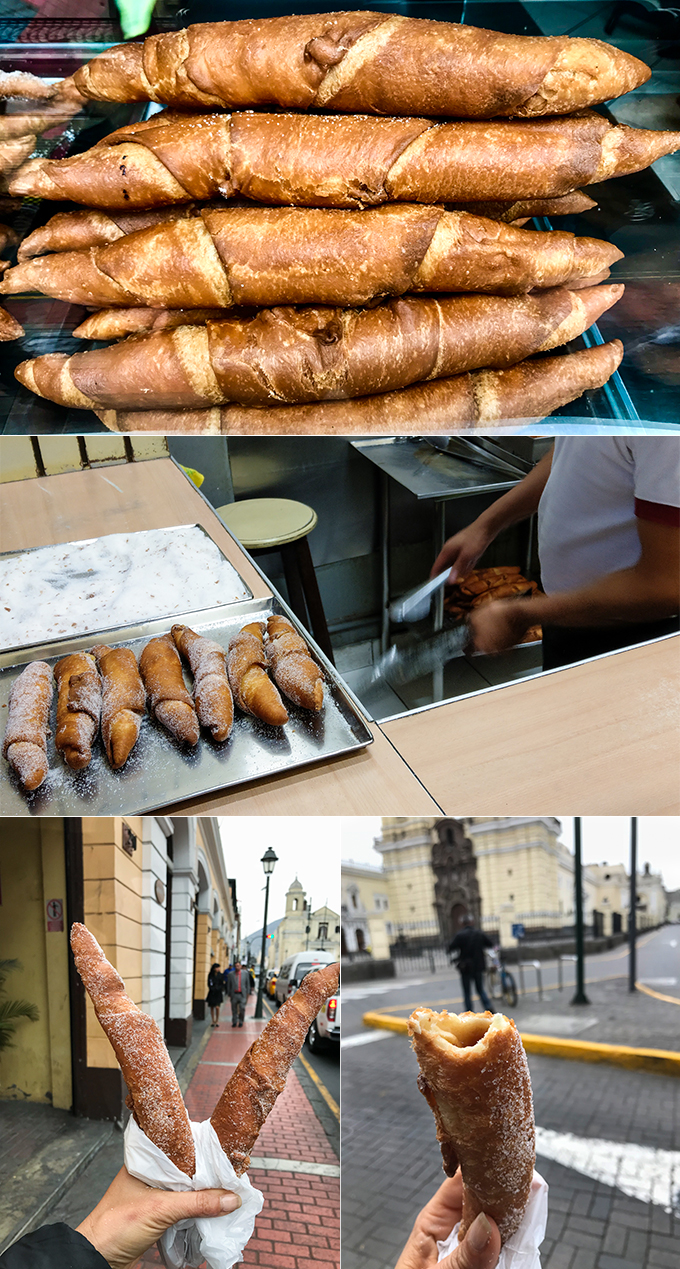
After the eerie sight of skulls and bones, you deserve a sweet treat. Even if you skip the catacombs, you must not leave Lima without trying these specialty dulce de leche-filled churros near the Convento de San Francisco. You will see the familiar churros everywhere in Lima, but these look and taste different – they are much larger and rather than spritzed into a fryer, the dough is folded over like a pastry. They are freshly made in front of you, and oozing with dulce de leche sauce, which is just the right amount of sweetness. I mean – they just take sweet fried dough to a whole new level of deliciousness. The place is called Churros San Francisco, and is located at 268 Jirón Lampa, the same street where the entrance to the Convento de San Francisco is.
Here’s how these places look on the map:

El Centro, Lima
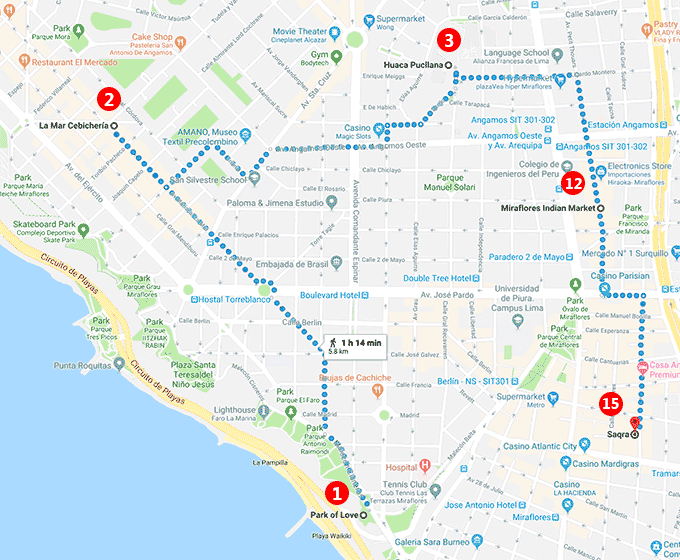
Miraflores, Lima
10) Try lucuma ice cream
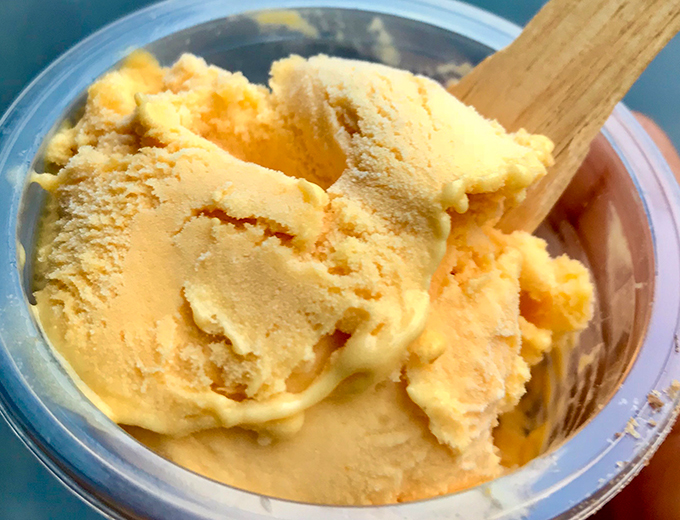
Lucuma is a super fruit native to Peru, that has been a staple in this region for thousand of years. In fact, it is known as the ‘gold of the Incas’ due to its yellow-orange flesh, and health benefits. The fruit is rarely consumed in its raw state because of its dry, starchy texture, but you will find it in dessert preparations, and especially as an ice cream flavor. The taste is sweet and caramelly – a cross between butterscotch, pumpkin and maple syrup. So for those of you, gastronomy enthusiasts, it’s a must to try lucuma ice cream, or other lucuma desserts. I have no particular place to recommend – just look for the lucuma flavor at the ice cream shops in El Centro.
11) Try exotic fruits
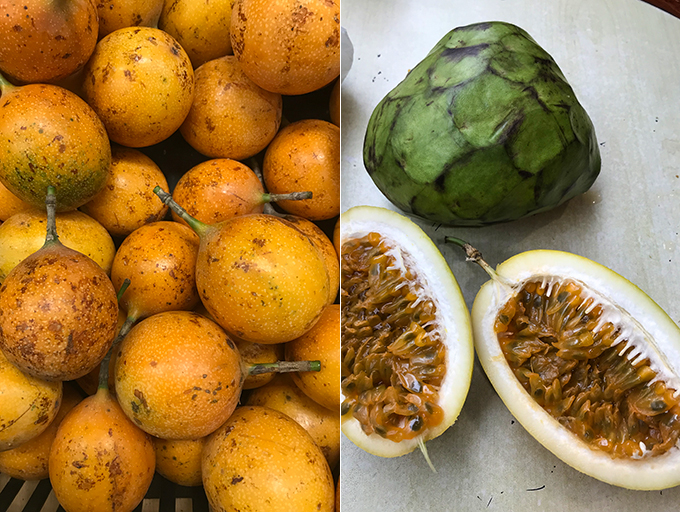
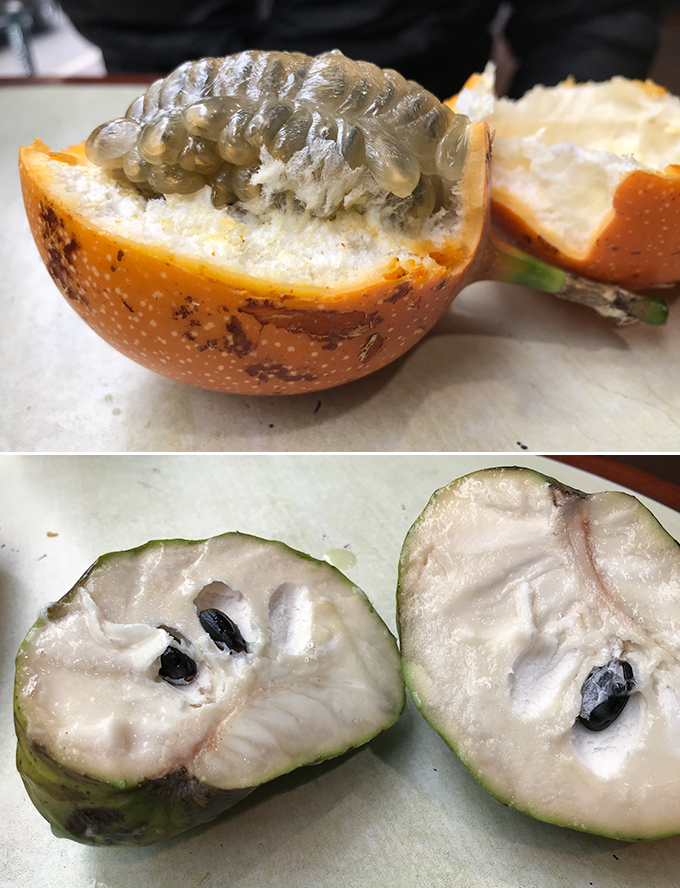
Since we’re on the topic of exotic fruits, don’t miss the opportunity to try as many unknown, Andean fruits as you can find! We simply went to Vivanda, an upscale super market and bought a few – guanabana, aguaymanto (pichuberry or golden berry), granadilla and maracuya (passion fruit). We loved the guanabana the most – it was creamy and juicy, and tasted like a cross between banana and pineapple. The granadilla was similar to passion fruit, but sweeter. I realized later that aguaymanto berries are actually the golden berries I buy here in the U.S. in dry form.
Another, even better option, is to visit a farmer’s market, and according to Andrew Zimmern, Surquillo market is among the top five places to visit in Lima. Well, we didn’t have the time to go, but wish we did.
12) Shopt at Mercado Indios in Miraflores

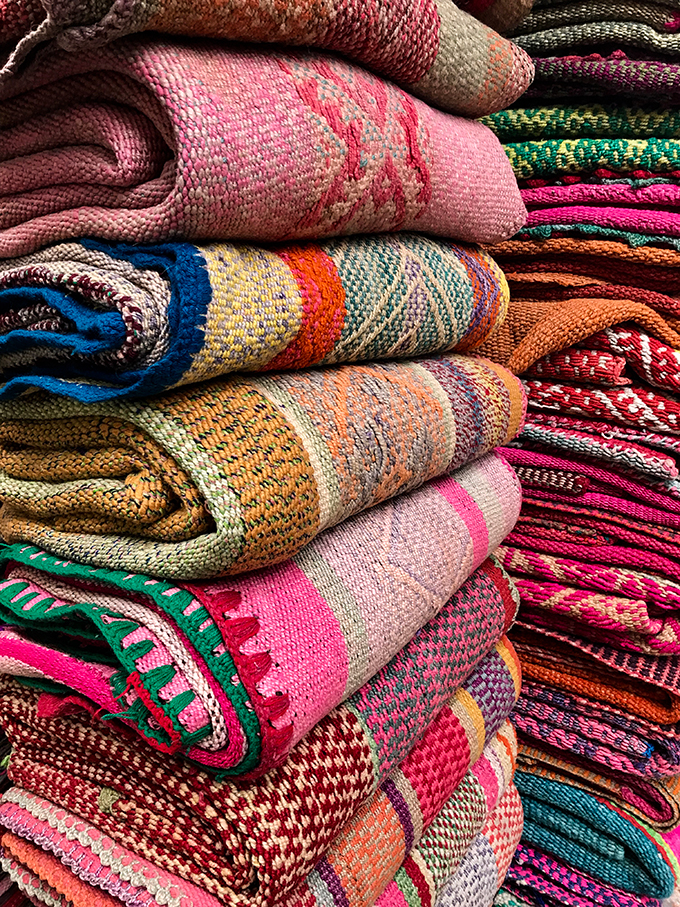
You can buy all your presents and souvenirs at the Indian Market in Miraflores, or the surrounding smaller markets. The whole area is packed with shops, and you can easily spend a few hours browsing through the market stalls, and bargaining for your finds. I actually found the prices in the bazaar across the street, even better. From brightly colored woven textiles, to great pottery, handicrafts, and silver, there’s a ton of choice.
13) Have a Pisco Sour at Ayahuasca
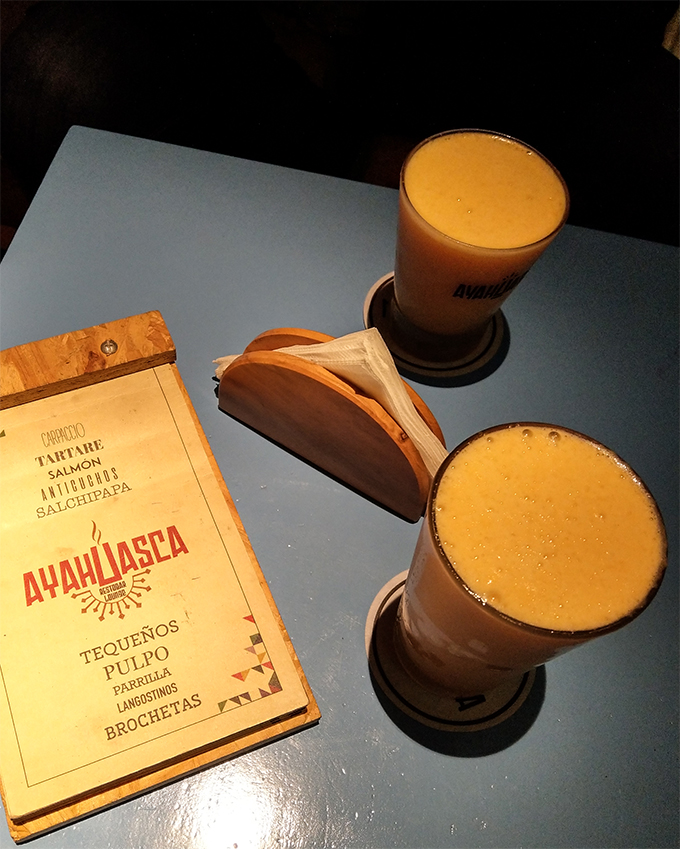
The famous Pisco sour drink, made of pisco, lime juice, simple syrup, Angostura bitters, and egg whites, was invented in Lima in the beginning of the last century. The actual birthplace is said to be the bar at hotel Maury. If you feel sentimental, or if you are in the mood for old-fashioned wooden bar, and heavy decor, have a classic pisco sour there. It’s conveniently located in the historic El Centro, close to Plaza Mayor.
We opted for Ayahuasca instead – a trendy bar, located in a refurbished 19th century mansion in the Barranco district, which we visited on our first night in Lima, for our first taste of Pisco Sour. The bar is named after the famous ayahuasca psychedelic concoction, used in ‘healing’ ceremonies by shamans in the Amazon region. Well, we didn’t get any hallucinogenic drinks there, but we had their special – Passion Fruit Pisco Sour, and it was delicious! They also serve some very crafty appetizers and small bites, but we were so full from our El Tio Mario visit, that we skipped the food. Seriously, when you are in Peru, you wish you had a spare stomach – there are just too many temptations.
14) Try Chicha Morada and other local specialties
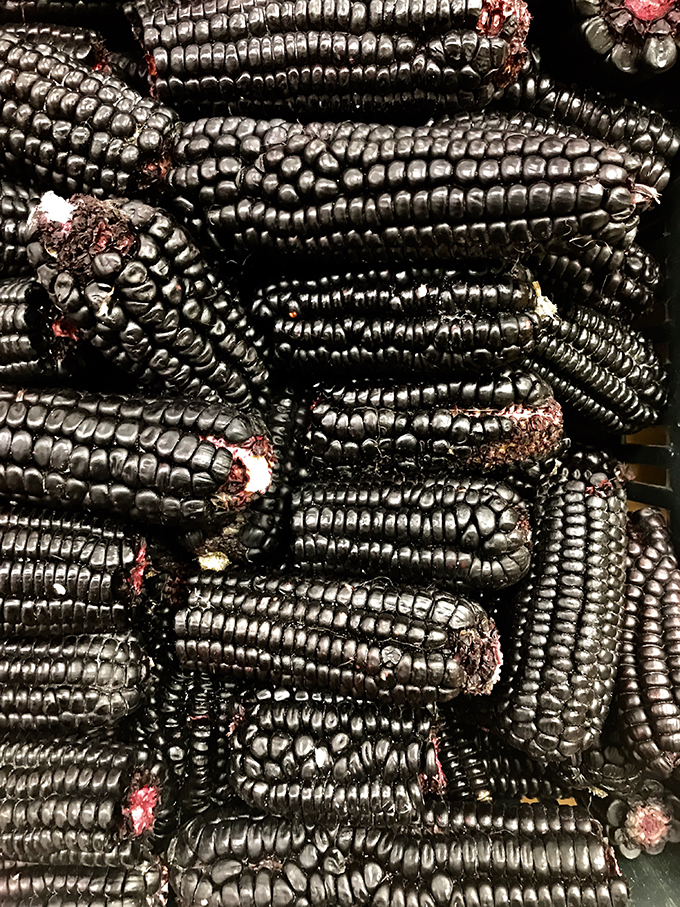
Just like Pisco Sour is the national drink of Peru, chicha morada maybe its non-alcoholic contender. This refreshing, dark-purple drink has been made for thousands of years in Peru, by boiling purple corn with sugar, cinnamon, cloves and pineapple peels. There are lots of variations, apparently, but the one we had in El Tio Mario was really delicious – it had a slight cherry flavor, and wasn’t too sweet.
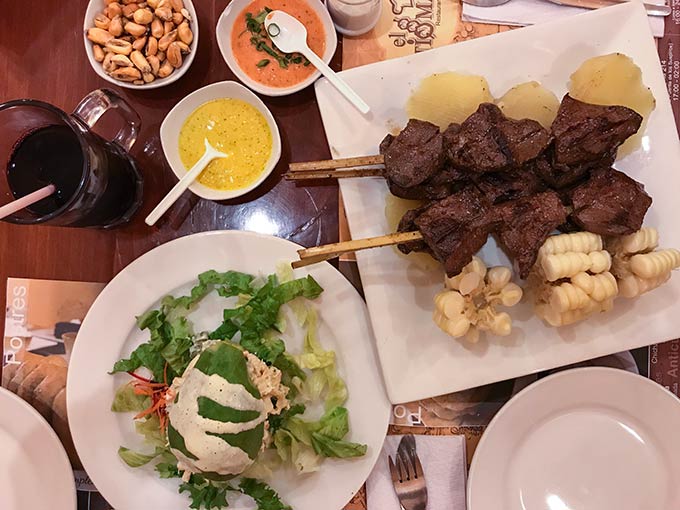
Beef hearts anticuchos at El Tio Mario – Barranco, Lima

Stuffed avocado with chicken salad and mayo sauce – El Tio Mario, Lima
A good place to sample some other Peruvian specialties is El Tio Mario – a traditional and inexpensive restaurant in Barranco.
If you make it to El Tio Mario, order their Anticuchos (supposedly the best in town) – beef heart skewers, marinated in cumin, garlic, red pepper and vinegar. For starters try the Palta a la reina (avocado stuffed with shredded chicken, veggies, and mayonnaise sauce), or Causa a la Limeña (mashed potatoes stuffed with chicken and avocado, served over chili cheese sauce), and for dessert you must get the famous Porción de picarones (Peruvian doughnuts made of sweet potato and pumpkin, and served with fig honey).
If you like sweeter desserts, get the Suspiro a la Limeña, a dulce de leche pudding with meringue top. It literally means the Sigh of the Lima lady, as it’s sweet and light like a lady’s sigh, according to a poet whose wife prepared this dessert for him. It’s also intensely sweet so it’s best to share it, and wash it down with a strong cup of black coffee.
15) Have dinner at Saqra
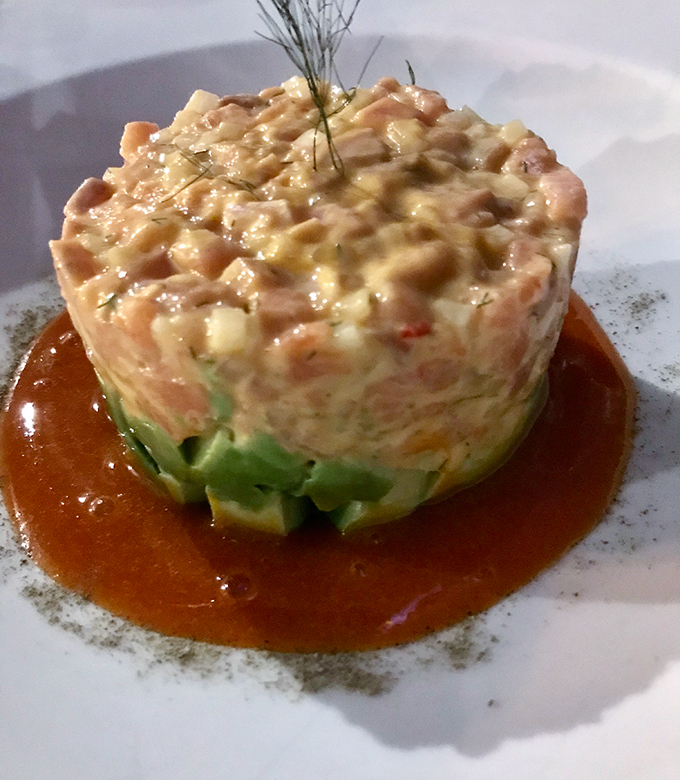
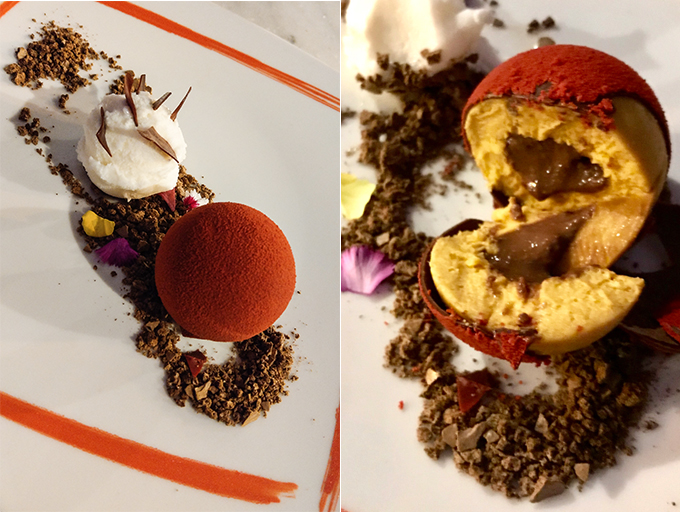
For our good-bye dinner, we went to Saqra – a quaint, little restaurant in the heart of Miraflores, which served some of the most interesting and creative dishes we’ve tasted.
For starters, we ordered their Cream of artichoke soup, and the Trout tartar – both exquisite and delicious. We ordered some more seafood and meat, and in the end, even though we had no space left, we decided to share a dessert. It was a tough choice between the White chocolate ball filled with rice pudding and a liquid dulce de leche center, served with strawberry sorbet, or the Chocolate truffles with banana creme brulee, or the Pineapple picarones with fig syrup and coconut ice cream, or the Lucuma mousse with toffee, chocolate crunch and pisco ice cream. I know…impossible choice!!
We settled for the lucuma mousse and were pleasantly surprised. It came in a perfectly spherical shape, with a thin chocolate crust on the outside, and a melted toffee center, sprinkled with some red velvet dust and served with pisco ice cream on the side. And that was the perfect ending to our gastronomical indulgence in Peru.
Here, I feel I need to make a disclaimer and say that even though my recommendations are great, there are probably hundreds more, equally worthy places to eat in Lima. If you’re really serious about your food, you should actually make reservations for a few top-notch restaurants, some of which are among the top restaurants in the world, a month or two in advance (see links below).
And here are a few of the things we couldn’t do but wish we did:
Visit the Larco Museum
Eat at Astrid y Gaston, or Central, or Maido, or Cala, or Amor Amar, or the numerous other fantastic places!
Visit Barranco neighborhood during the day
Visit a big market like Suquillo
Take a day trip to Huacachina dessert and oasis
Go to San Isidro and walk in Parque El Olivar, and have a cocktail/dinner on the terrace of Country Club Lima Hotel.
Check out my post about Cusco, and stay tuned for more Peruvian adventures. Hopefully some Peruvian recipes will also make it to the blog sooner than later!
Until next time!
xoxox
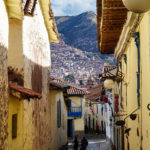
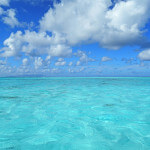
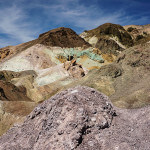
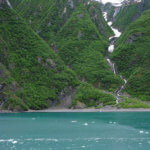
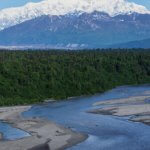
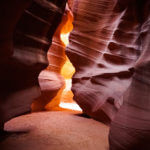
[…] since we came back from our trip to Peru, I’ve been experimenting with Peruvian recipes. Peruvian cuisine is fantastic, and it was a […]